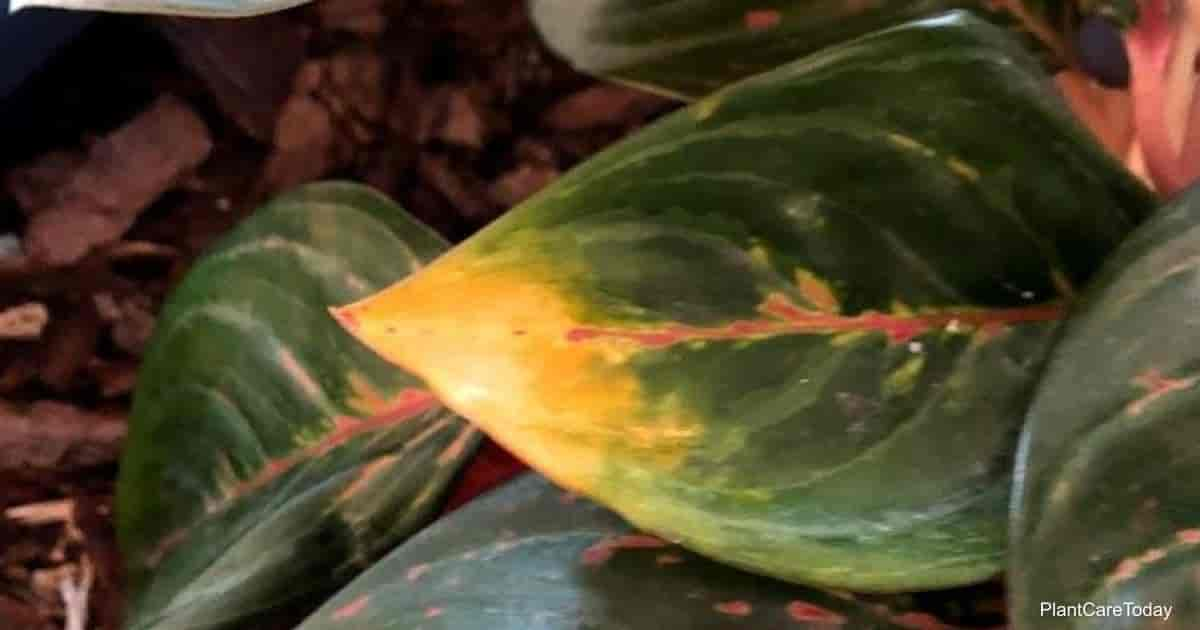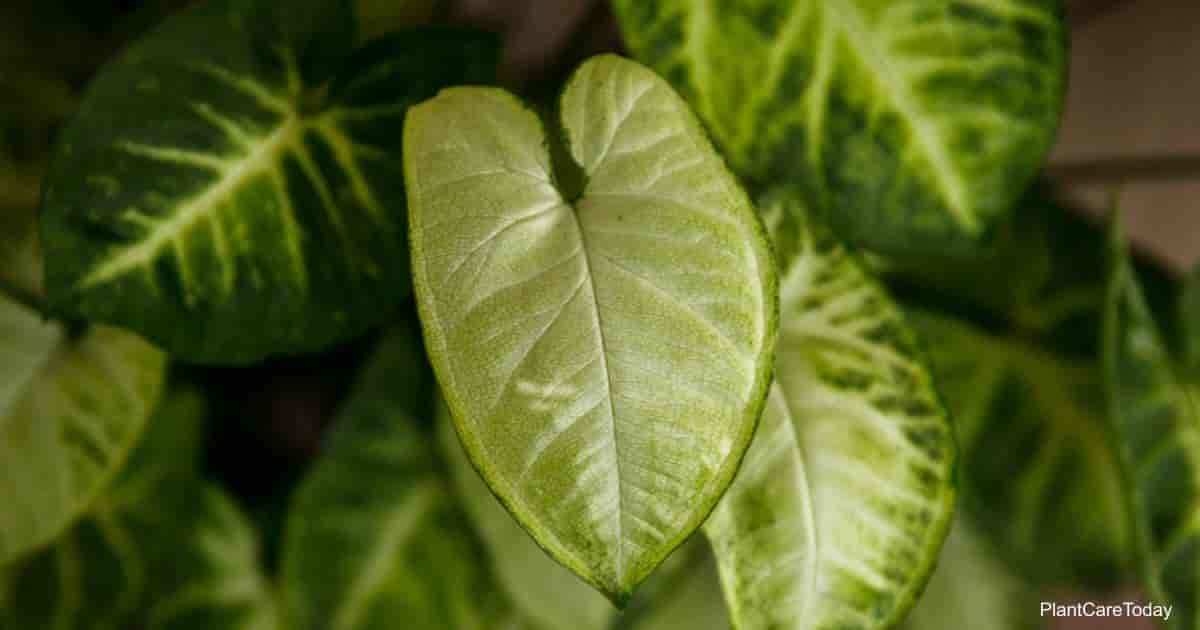Known as the peacock plant – Calathea makoyana [kal-luhth-EE-uh, mack-oy-AY-nuh] are attractive, colorful foliage plants hailing from Africa, Central America, South America, and the West Indies.
There are more than three hundred different species, types, and Calathea varieties, both naturally occurring and hybrids.
These Calathea plants are evergreen perennials and members of the Marantaceae family, which is sometimes known as the arrowroot family.
Common names include:
- Cathedral Windows
- Calathea Peacock
- Peacock Plant
- Brain Plant
- Prayer Plant– Maranta leuconeura goes by the same name
Peacock Plant Care
Size & Growth
When kept as a houseplant, the peacock plant grows as a short bush, rarely more than 2′ feet tall and 2′ feet wide.
The simple, ovate leaves are 4″ to 8″ inches long.
They grow in a spiral arrangement along the stem.
Undersides of the leaves of all species are typically purple, but the topsides vary in patterns and colors.
Colors include:
- Green
- Cream
- White
- Silver
- Pink
The sturdy stems and veins are typically burgundy colored.
Flowering & Fragrance
This plant is mostly grown for its attractive foliage.
The flowers are quite small and very inconspicuous in most plants; however, there are some types that have very beautiful flowers.
Among them are:
- Calathea Crocata
- White Ice
- Brazilian
The flowers are usually white but may vary. They appear sporadically year-round.
Light & Temperature
Peacock Plant is a shade plant. It does best with bright, indirect lighting.
Good placements are near east, west or north facing windows.
Excessive direct sun will burn the leaves and fade the plants’ pretty colors.
Calathea appreciates temperatures ranging from 65° to 80° degrees Fahrenheit (18° – 27° C).
You must protect your Calathea from both hot and cold drafts.
If kept in an excessively warm setting for an extended period, the plants’ leaves will dry out and curl.
Calathea is winter hardy in USDA hardiness zones 10 through 11.
Watering & Feeding
- Peacock Plant demands a very high quality of water.
- If your water is too soft, too hard, heavily fluoridated, or full of other sorts of chemicals, the leaves will burn and turn brown.
- The best water to use is distilled water, with rainwater running a close second.
- If neither of these is available, you may run a bucket of tap water and let it sit out for twenty-four hours before using it.
- This will not eliminate all chemicals in the water, but a great many of them will dissipate.
- Check frequently, and when the top couple of inches of soil have dried out, it’s time to water.
- The soil must be kept continuously moist, but it must never be kept soggy.
- Continuous soggy conditions cause root rot.
- Calathea leaves are very subject to drying out and turning brown, so you must keep humidity levels high.
- It’s a good idea to place your plants on a pebble tray with water or use a humidifier in the room.
- Give Calathea a half-strength dose of liquid balanced plant food once a month throughout the growing season (spring through autumn).
- Do not fertilize in the winter.
Soil & Transplanting
- Use a light, well-draining, porous potting soil rich in organic matter.
- It should both retain water and drain well.
- African Violet potting soil is a good choice.
- These plants are slow growers, and will rarely need to transplant.
- When you do, just move up one pot size.
- If you find your plant has become root bound, divide it into two or more plants.
Grooming & Maintenance
These plants tend to be a bit finicky and high maintenance, but most Calathea fanciers feel they are worth the extra effort.
Keep a close eye on the plant and trim off any dead or brown leaves immediately to prevent problems with rot.
How To Propagate Calathea Makoyana
Division: Grow new Calathea by division when you repot your plant.
- To propagate Calathea by division, begin by preparing the pots you will put your divided plants into.
- Unpot your parent plant, shake off the excess soil and pull the roots apart gently to identify the potential independent plants.
- Pull the plants apart gently.
- It’s okay to trim connecting roots, within reason.
- You want each plant to have plenty of roots to be able to stay alive and thrive.
- Repot the separated plants into your prepared pots and give them a good watering.
- You may wish to place a plastic bag lightly over each pot to help hold in humidity.
- Keep the plants in a warm setting with slightly lower lighting for a week or so while they become established.
Cuttings: Also, grow Calathea from cuttings.
- To propagate with stem cuttings, locate a healthy stem with visible leaf nodes.
- Cut below the leaf nodes.
- You may be able to root these cuttings in water.
- Generally speaking, cuttings rooted in soil grow stronger roots.
- Dip the cuttings into rooting hormone and plant them into pots of moist, well-draining soil.
- This could be a good quality potting mix or your mixture of vermiculite or perlite, peat moss, and compost in equal amounts.
- Be sure to keep the soil evenly moist and the humidity levels high.
- Place a plastic bag over the cuttings lightly to help hold moisture in.
- Place the cuttings in a warm area with bright indirect sunlight and watch for new growth within the next couple of weeks.
- Once established, replant your cuttings into larger pots if you wish.
Calathea Makoyana Main Pest or Disease Problems
Calathea is subject to most houseplant pests, such as:
- Aphids
- Mealybugs
- Scale insects
- Spider mites
To avoid problems with these pests, be sure to examine any plants you bring into your home, and keep new plants in quarantine for a couple of weeks before introducing them to your collection.
Be sure not to expose Calathea to negative conditions such as excessive light, drafts, excessive watering, poor ventilation, and overcrowding.
Calathea likes high humidity, and consistent moisture, overcrowding, and poor air circulation can cause problems with fungal and bacterial diseases.
Is Makoyana Calathea Toxic Or Poisonous?
These houseplants are non-toxic.
Is Peacock Makoyana Invasive?
Calathea is not known to be invasive.
Suggested Peacock Plant Uses
Calathea makes a nice house plant in any climate and a lovely outdoor specimen plant in tropical and subtropical climates.
In these settings, it is used as an outdoor container plant, a border plant, or even a groundcover in a shady location.
Credit : Gary Antosh (https://plantcaretoday.com/peacock-plant.html)





